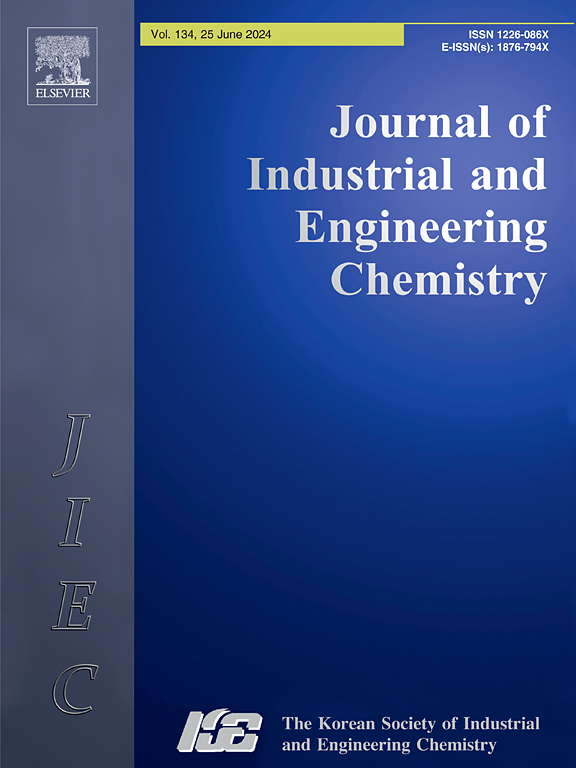Synergistic lubrication mechanism and dispersion behavior of dodecanethiol-modified graphene oxide nanolubricant
IF 5.9
3区 工程技术
Q1 CHEMISTRY, MULTIDISCIPLINARY
Journal of Industrial and Engineering Chemistry
Pub Date : 2024-10-28
DOI:10.1016/j.jiec.2024.10.043
引用次数: 0
Abstract
To enhance both the load-bearing capacity and dispersion stability of graphene oxide (GO), this study proposes a novel nanolubricant design approach. A dual-function additive acting as both a surface modifier and an extreme pressure agent, dodecanethiol (DDT), was introduced into the GO nanolubricant. As a pioneering dispersion method, sodium dodecyl sulfate-oleic acid (SDS-OA) gelators were incorporated to drag DDT-modified GO (GO/DDT) through the Van der Waals force between alkyl chains, which enables GO/DDT nanolubricant maintain stable dispersion in white oil (WO) for over one year. Additionally, the well-dispersed GO/DDT nanolubricant exhibit superior anti-friction, anti-wear and extreme pressure property under minimum quantity lubrication conditions. Compared with WO, the coefficient of friction (COF) and wear scar diameter (WSD) under 0.06 wt% GO/DDT nanolubricant lubrication were reduced by 31.9% and 28.8%. These are attributed to the fact that the modifier DDT not only participates in the molecular attraction with the gelators to inhibit the sedimentation of GO nanosheets, but also synergizes with GO to form both physical protective films and chemical reaction films on the friction surface.

求助全文
约1分钟内获得全文
求助全文
来源期刊
CiteScore
10.40
自引率
6.60%
发文量
639
审稿时长
29 days
期刊介绍:
Journal of Industrial and Engineering Chemistry is published monthly in English by the Korean Society of Industrial and Engineering Chemistry. JIEC brings together multidisciplinary interests in one journal and is to disseminate information on all aspects of research and development in industrial and engineering chemistry. Contributions in the form of research articles, short communications, notes and reviews are considered for publication. The editors welcome original contributions that have not been and are not to be published elsewhere. Instruction to authors and a manuscript submissions form are printed at the end of each issue. Bulk reprints of individual articles can be ordered. This publication is partially supported by Korea Research Foundation and the Korean Federation of Science and Technology Societies.

 求助内容:
求助内容: 应助结果提醒方式:
应助结果提醒方式:


